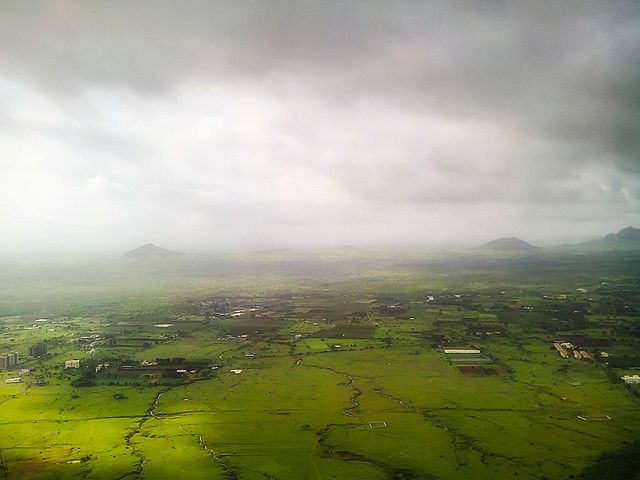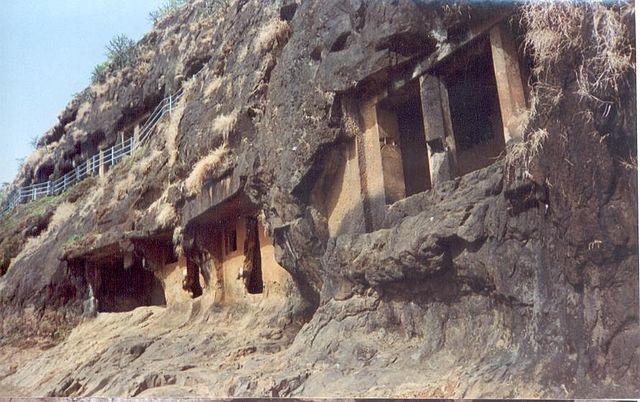The Trirashmi Caves, or Nashik Caves, are a group of 23 caves carved between the 1st century BCE and the 3rd century CE, though additional sculptures were added up to about the 6th century, reflecting changes in Buddhist devotional practices. The Buddhist sculptures are a significant group of early examples of Indian rock-cut architecture initially representing the Early Buddhist schools tradition.
Nasik Caves, Cave No. 17, built circa 120 CE.
Panorama from the caves, during the monsoon season.
Part of the caves (Caves No.6 to No.8) at Pandavleni.
Additional caves under the visitor's path at Pandavleni.
Indian rock-cut architecture
Indian rock-cut architecture is more various and found in greater abundance in that country than any other form of rock-cut architecture around the world. Rock-cut architecture is the practice of creating a structure by carving it out of solid natural rock. Rock that is not part of the structure is removed until the only rock left makes up the architectural elements of the excavated interior. Indian rock-cut architecture is mostly religious in nature.
Cave 19, Ajanta, a 5th-century chaitya hall
Kailash Temple, Ellora cave 16
Saptaparni Cave, a retreat of the Buddha.
The famous carved door of Lomas Rishi, one of the Barabar Caves, dated to approximately 250 BCE, displaying the first known Maurya reliefs.








